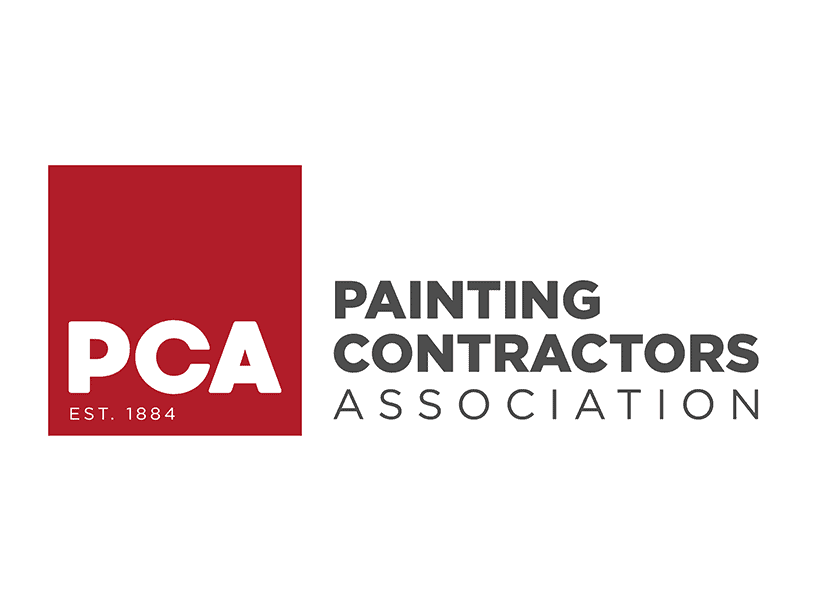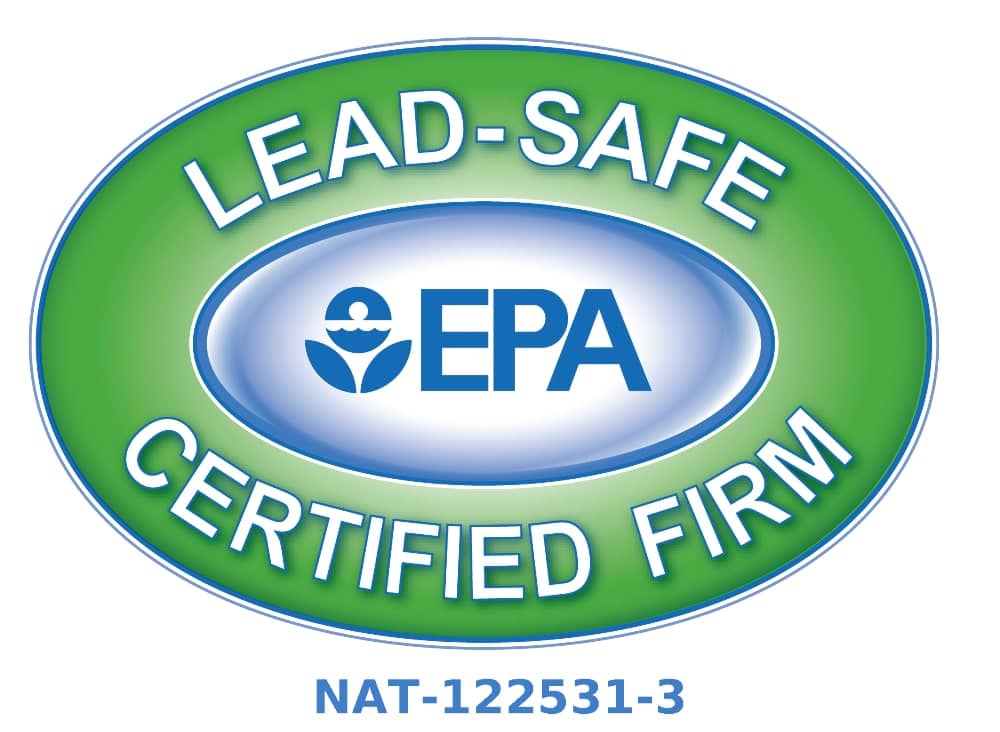
10 Jul How the Weather in Vienna, VA Affects Exterior Paint Longevity
The durability of your exterior paint in Vienna, VA, depends heavily on the local weather conditions you face throughout the year. Hot summers with intense UV exposure can cause fading and chalking, while the cold winters bring freeze-thaw cycles that may lead to cracking and peeling. Additionally, frequent spring rains and high humidity can challenge paint adhesion and promote mildew growth. By understanding Vienna’s climate impacts on your paint, you can select the right products and apply proper techniques to extend the paint’s lifespan and keep your home looking its best. Home Works Painting in Vienna, VA, offers expertise tailored to these conditions.
Key Takeaways:
- Vienna, VA, experiences a mix of humid summers and cold winters, which means exterior paint must handle both high moisture levels and freezing temperatures to maintain its color and adhesion over time.
- Selecting paints with strong resistance to UV rays and humidity helps protect homes in Vienna, VA, from sun fading and mildew growth caused by the region’s weather.
- Proper surface preparation and using primers suited for temperature fluctuations in Vienna, VA, can extend the life of exterior paint by accommodating seasonal expansion and contraction of building materials.
Homeowners in Vienna, VA, can benefit from understanding how local weather patterns affect paint durability, making informed choices when repainting their homes. The blend of hot, humid summers and cold, sometimes snowy winters presents challenges that demand paints formulated for multi-season resilience. In Vienna, VA, focusing on moisture-resistant and UV-protective paint options ensures a lasting and attractive exterior finish. Home Works Painting specializes in helping residents in Vienna, VA, select and apply the best products tailored for these climate conditions, enhancing both appearance and longevity.
The Chemistry of Paint: What Makes It Last
The Role of Pigments and Binders
Pigments provide the vibrant color and opacity that define a home’s look, while binders hold these pigment particles together and help the paint adhere to surfaces. In VA’s summers and freezing winters, paints with high-quality, weather-resistant binders ensure that pigments do not fade prematurely. Acrylic binders, for example, excel in maintaining color vibrancy and flexibility, allowing your paint to expand and contract with seasonal temperature swings without cracking or peeling.
Understanding Solvents and Additives
Solvents adjust the paint’s viscosity for easy application and proper drying, while additives enhance properties such as mildew resistance, UV protection, and flow. You want solvents that evaporate steadily to prevent blistering in humid months, paired with additives that inhibit fungal growth during muggy summers, thereby boosting the paint’s resistance to moisture damage.
Solvents typically comprise water in latex paints or organic compounds in oil-based paints, which influence drying time and environmental impact. For instance, fast-evaporating solvents reduce dust contamination on wet paint but may cause surface cracks if too rapid. Additives such as mildewcides and UV stabilizers work actively to combat environmental stressors common to Vienna’s annual cycles. With the right balance, your exterior paint resists chalking and chalk formation, keeping surfaces looking fresh well beyond the first few years. Consulting local professionals like the team at Home Works Painting can guide you to select products optimized for this specific climate, ensuring coatings that endure without needing frequent touch-ups.
Climate Challenges: The Impact of Weather on Paint Performance
Sunlight and UV Damage in Arid Regions
Arid climates subject your exterior paint to intense UV radiation, which breaks down paint binders and causes fading, chalking, and cracking. Paints with high UV resistance, such as aliphatic polyurethane and silicon coatings with sunlight reflectivity of up to 90%, are best suited to withstand this challenge. In places like Vienna, VA, where summer sun can be harsh, selecting coatings that minimize heat absorption will extend the paint’s appearance and structural integrity.
The Effects of Humidity and Rain in Tropical Climates
High humidity and frequent rainfall in tropical-like environments accelerate issues like peeling, blistering, and mold growth on painted surfaces. Paints formulated with mildewcides and water-resistant additives help combat moisture intrusion, preserving your exterior finish. Although Vienna doesn’t experience true tropical conditions, its humid summers demand similar attention to moisture-resistant properties in paint selection.
To handle moisture-related paint degradation effectively, products designed for humid climates incorporate biocides that prevent mildew and algae growth on damp surfaces. Applying a quality primer and ensuring thorough surface preparation can further reduce water penetration. These measures are especially important in Vienna’s ser months when humidity levels routinely hover above 70%, putting your paint at constant risk of moisture damage.
Cold Weather Vulnerabilities in Northern Environments
Freezing temperatures and frequent freeze-thaw cycles can cause exterior paint to lose adhesion, crack, or flake off. Paints that maintain elasticity and strong surface bonding during cold spells protect surfaces from moisture infiltration and temperature-induced damage. For Vienna, VA, winter paints with superior adhesion and flexibility reduce the risk of accelerated wear while sustaining color vibrancy despite sub-zero conditions.
Extended exposure to cold causes expansion and contraction of substrates, which stresses the paint film. When selecting paint, focus on formulations that resist brittleness and maintain performance at temperatures below 0°C (32°F). Using primers and sealers formulated for cold climates can add an extra layer of protection, ensuring your exterior paint withstands the long winters common in Northern Virginia.
Choosing the Right Paint for Southern Sun
UV-Resistant Paint Options
For homes in Vienna, VA, facing relentless southern sun exposure, selecting paint with high UV resistance protects your investment by minimizing fading and surface breakdown. Aliphatic polyurethane coatings excel here, retaining vibrant color even after prolonged sunlight. Silicon-based paints reflect up to 90% of UV rays, reducing heat absorption on roofs and exterior walls. Acrylics offer a balance of fast drying and excellent color retention, making them popular choices across various surfaces. Opting for these formulations helps maintain the home’s appearance despite constant solar challenges.
Essential Features for Long-Lasting Color Retention
Longevity in color retention depends on more than just UV resistance. Paints designed for southern exposure frequently incorporate advanced binders and pigments that resist chalking and cracking under intense heat and sunlight. Flexible formulas accommodate material expansion and contraction caused by daily temperature swings, preventing premature peeling and blistering. Additives that reduce dirt adhesion also keep surfaces looking clean longer, reducing repaint frequency in the summer. These features combine to preserve both the aesthetics and protective qualities of your exterior paint job.
The foundation of lasting color in southern climates hinges on technology embedded in the paint itself. Pigments with high lightfastness endure harsh UV rays without significant discoloration over time. Resilient binders provide elasticity, allowing the paint film to move with building materials during thermal shifts typical in Vienna, preventing micro-cracks that invite moisture intrusion. Additionally, surface treatments that combat dirt accumulation maintain brightness and reduce the need for frequent washing or recoating. Choosing paints that address these factors translates to extended protection against fading and degradation under southern sun stresses.
Cold Climate Solutions: Paints That Stand Up to Ice
Key Attributes of Winter-Resistant Paints
Winter-resistant paints in Vienna, VA, feature superior adhesion that keeps them firmly bonded despite freeze-thaw cycles. These paints resist cracking and peeling by maintaining elasticity at temperatures well below freezing. Look for formulas with enhanced resistance to moisture penetration, which prevents ice buildup and damage beneath the surface. Additionally, color retention during cold months helps your home maintain its visual appeal year-round, even after repeated exposure to snow and ice.
The Importance of Proper Preparation and Application
Applying cold-weather paint in Vienna, VA, requires meticulous surface preparation to combat moisture and temperature challenges. Surfaces must be dry, clean, and free from loose material before Painting to ensure optimal bond strength. Using a compatible primer designed for cold weather improves adhesion and shields substrates from harsh conditions. Painting during days when temperatures range between 10°C and 20°C with no forecasted precipitation in the next 24 hours offers the best chance for full cure and long-lasting protection.
Failing to remove dirt, mildew, or old peeling paint creates weak points that accelerate winter damage, especially with ice expansion in cracks. A primer compatible with your chosen topcoat seals porous surfaces, reducing the risk of blistering or flaking when moisture freezes beneath the paint. Proper application techniques, including multiple thin coats rather than a single thick layer, promote quicker drying and reduce the likelihood of imperfections forming. Given the unpredictable weather in Vienna, VA, consulting a local painting professional can help tailor preparation and timing strategies to maximize the paint’s lifespan in cold months.
Humidity and Rain: Selecting Paints for Tropical Conditions
Moisture-Resistant Formulations
Opt for exterior paints formulated with high moisture resistance to tackle VA’s summers and frequent rainfall. These paints often include mildewcides and additives that prevent fungal growth and water damage, helping to preserve paint’s integrity and color vibrancy. Choosing products designed for wet conditions reduces the risks of peeling and blistering, which can otherwise shorten paint’s lifespan. This makes selecting paints with these features particularly effective against persistent moisture challenges.
Tips for Maintaining Paint in High-Humidity Areas
Extending your paint in humid environments involves more than just the right product. Timely maintenance, such as inspecting for signs of mildew or water damage, helps you catch issues early. Use gentle cleaning methods to remove dirt and organic growth without harming the paint layer. Maintaining good ventilation around painted surfaces also reduces trapped moisture, limiting decay. This proactive care supports lasting beauty for homes, especially in climates like Vienna, VA, where humidity fluctuates seasonally.
Taking these maintenance steps further ensures your paint withstands the climatic conditions. Keeping gutters clean and directing water away from your walls minimizes persistent dampness. Address any peeling or cracking promptly with appropriate touch-ups to prevent further deterioration. You may also consider applying a clear, breathable sealant to vulnerable surfaces to enhance moisture protection. Local experts, such as the team at Home Works Painting in Vienna, VA, can offer tailored advice and professional upkeep services for your exterior finish. Consistent upkeep, paired with moisture-resistant paints, is a winning strategy for year-round durability.
- Inspect regularly for mildew and water-related damage to catch early problems.
- Clean surfaces gently using mild solutions that preserve paint integrity.
- Improve ventilation to reduce trapped moisture in humid seasons.
- Maintain gutters and drainage to divert water away from painted areas.
- Use professional touch-ups to address peeling or cracking immediately.
- Apply breathable sealants as an added moisture barrier.
- This combined approach helps exterior paint SurVisurVienna’s climate challenges.
Lessons from Regional Case Studies: Which Paints Thrive?
- Desert Climates: Paints with high UV resistance and heat-reflective properties outperform others, lasting up to 8 years without significant fading under temperatures exceeding 40°C. Silicone-based coatings reflect up to 85% of sunlight but require regular cleaning due to dust accumulation.
- Coastal Regions: Paints formulated with anti-corrosive primers and elastomeric topcoats can extend longevity by 30-40% compared to standard products. Salt spray tests have shown that acrylic-based paints, paired with primers, resist flaking and chalking for over 7 years in high-salinity air.
- Mountainous Areas: Flexibility and adhesion stand out, with specialty acrylic elastomers showing 50% less cracking amid wide temperature swings of -15°C to 30°C. Using sealers enhances resistance to moisture ingress during freeze-thaw cycles.
Insights from Desert Environments
The arid climate in desert regions pushes exterior paints to their limit. You’ll fit most from coatings specifically designed for intense UV exposure and heat, such as aliphatic polyurethane or silicone-based paints. These paints reflect substantial sunlight—up to 85%-90%—and maintain color vibrancy despite scorching daytime temperatures regularly reaching 40°C or more. Frequent dust accumulation, however, requires regular maintenance to preserve appearance and performance.
Coastal Paint Performance Analysis
Salt-laden air and abrasive sand contribute to accelerated paint deterioration in coastal zones. Paint systems that combine a high-quality primer with elastomeric acrylic topcoats significantly reduce peeling and chalking, often extending the effective lifespan of exterior paints beyond 7 years. Annual inspections reveal that corrosion resistance is improved, especially when extra attention is given to surface preparation and primer adhesion.
Beyond just resisting salt and sand, coastal paints must also manage increased humidity and moisture. Formulations with added mildewcides and water-repellent properties minimize mold growth and moisture penetration that can otherwise degrade your paint layers prematurely. You’ll find that pairing appropriate primers with flexible acrylic topcoats offers the best balance between durability and aesthetic retention in these challenging environments. Regular upkeep, such as surface washing and timely touch-ups, maintains the integrity of your exterior, especially in areas like Vienna, VA, where coastal influences may increase during warmer months.
Paint Durability in Mountainous Areas
The rapid temperature shifts common in mountainous regions require paint flexibility and adhesion. Specialized elastomeric acrylic paints excel in this regard, reducing the risk of cracking by adapting to substrate expansion and contraction between cold winters and warm summers. Effective sealing against moisture infiltration enhances protection against freeze-thaw damage, a frequent cause of paint failure.
Given the altitude-related stress and fluctuating weather in mountainous zones, your paint choice should focus on long-lasting adhesion and elasticity. Incorporating primers compatible with flexible topcoats ensures better performance through repeated thermal cycling. For residents in Vienna, VA, where nearby elevated areas influence local weather, consulting with experienced painters can guide you to the right product system and application method. This strategy prolongs the lifespan of your paint, minimizing costly early repainting and maintenance.
Cutting-Edge Innovations: The Future of Exterior Paints
Advances in Durable Paint Formulations
Exterior paint technology has made significant leaps with formulations now offering enhanced resistance against extreme weather conditions common in Vienna, VA. Modern paints incorporate advanced polymers and additives that improve adhesion, flexibility, and UV stability. For example, silicone-enhanced paints reflect up to 90% of sunlight, reducing surface temperature and slowing degradation. These developments mean your paint job can last longer despite the humid summers and cold winters typical of the region, reducing the frequency of costly maintenance.
The Rise of Smart Paints in Home Maintenance
Smart paints are transforming how you protect your home in Vienna, VA by adjusting to environmental changes. These coatings contain microcapsules that respond to temperature fluctuations, moisture levels, or sunlight, enhancing durability and preventing damage before it starts. By using smart paints, you reduce repaint cycles and improve overall efficiency in maintaining property and structural integrity.
The technology behind smart paints involves innovative self-healing properties and interactive responses to local climate stresses. For instance, some formulations release protective agents when cracks begin to form or repel moisture during rainy spells, which is particularly beneficial for homes exposed to Vienna’s variable weather patterns. With these dynamic features, smart paints help you stay ahead of deterioration, ultimately extending the lifespan of the paint and lowering your long-term upkeep expenses.
Practical Tips for Maximum Paint Longevity
Best Practices for Application Techniques
Achieving a durable paint finish in Vienna, VA, starts with thorough surface preparation—remove dirt, mildew, and any loose paint before you apply. Use high-quality brushes and rollers designed for exterior use to ensure smooth, even coats. Applying paint within the recommended temperature range of 10°C to 30°C and avoiding Painting before rain helps prevent premature failures. Multiple thin layers outperform thick, hurried coats, boosting adhesion and longevity. Consult local professionals like Home Works Painting to benefit from tailored advice and expert application that responds to Vienna’s weather.
Routine Maintenance and Touch-Up Strategies
Inspect your exterior paint annually in Vienna, looking for cracks, peeling, or fading influenced by the region’s summers and humid winters. Promptly address minor damage with spot repairs using the same paint to stop deterioration before it spreads. Cleaning painted surfaces to remove dirt and mildew enhances longevity, especially after harsh weather events. Coordinating maintenance schedules based on local climatic patterns helps stretch the lifespan of your paint investment and maintain your home’s appeal.
Routine maintenance in Vienna, VA, demands a proactive approach due to the area’s weather conditions. Start by scheduling biannual inspections—early spring and late fall work well—to catch emerging issues. Use gentle cleaning solutions to remove buildup without harming the paint film, particularly after wet winters that promote mildew growth. When touching up, feather the edges to blend repairs seamlessly, and spot-prime any bare spots to restore the protective barrier. Home Works Painting recommends maintaining a maintenance log for all touch-ups to efficiently manage future repainting cycles and prevent costly repairs caused by neglect.
Knowing these practical strategies can enhance the durability of your exterior paint against Vienna’s weather challenges.
To wrap up
As a reminder, the weather in Vienna, VA, with its hot summers, cold winters, and seasonal humidity, can significantly influence your exterior paint’s longevity. You should select paints designed to handle UV exposure during summer and resist freezing temperatures in winter to maintain your home’s serenity. Additionally, dealing with areas ‘ reactivity and occasional rainfall means choosing moisture-resistant coatings will help protect your surfaces. By understanding these local climate factors in Vienna, VA, you can make informed decisions to extend the life of your exterior paint and keep your home looking its best. For expert guidance, consider consulting Home Works Painting for tailored solutions.
FAQ
Q: How does Vienna VA’s weather impact the lifespan of exterior paint?
A: Vienna, VA, experiences a mix of hot summers, cold winters, and moderate humidity throughout the year. The summer heat and strong sunlight can cause paint colors to fade over time, especially if the paint does not have sufficient UV resistance. In winter, freezing temperatures and occasional snow can lead to paint cracking or peeling if the paint lacks flexibility and proper adhesion. The moderate rain and humidity during spring and fall can also contribute to moisture-related issues, such as mildew growth or blistering, particularly if the paint used is not designed for moisture resistance. Selecting a quality exterior paint formulated to handle these seasonal variations helps extend the life of Vienna’s paint.
Q: What paint types are best suited for the climate conditions in Vienna, VA?
A: For the variable climate of Vienna, VA, paints with UV resistance and moisture protection are ideal. Acrylic coatings perform well because they offer excellent color retention and dry quickly, which is beneficial during humid or rainy periods common in the region. Additionally, paints with mildew-resistant additives provide extra protection against moisture-related damage. For areas exposed to intense sunlight, selecting paints with aliphatic polyurethane components can help maintain color vibrancy over time. Using primers and sealers formulated for the local climate also improves adhesion and durability. Homeowners in Vienna benefit from consulting with local paint experts to choose products tailored to their area.
Q: What steps can homeowners in Vienna, VA, take to maximize the longevity of their exterior paint?
A: To maximize exterior paint durability in Vienna, it’s important to prepare surfaces properly by cleaning, drying, and removing any old flaking paint before applying new coats. Painting should be done during moderate weather conditions—ideally when temperatures are between 50°F (10°C) and 86°F (30°C) and no rain is expected for at least 24 hours. Using high-quality brushes and rollers can provide smoother, more even coverage, reducing wear over time. Periodic maintenance, such as inspecting for chips or cracks and addressing minor repairs promptly, will prevent larger issues caused by regional weather fluctuations. Consulting companies like Home Works Painting, which understand Vienna’s specific weather challenges, can also improve paint results and longevity.

Mike Katounas is the owner of Home Works Painting, a painting business in Northern Virginia. He has over 15 years of experience in residential interior and exterior painting, drywall installation/repair, carpentry, wallpaper removal, power washing, commercial painting, color consultation, and staining/sealing. Their service areas include Chantilly, Fairfax, Herndon, Oakton, Reston. Mike takes pride in his work, and he always follows a strict code of conduct that includes the use of quality paint, a clean workspace, and an honest, respectful approach to his customers.












Sorry, the comment form is closed at this time.